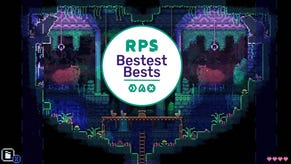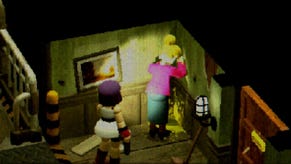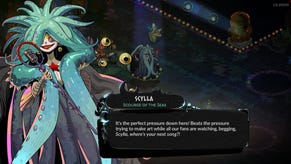Wot I Think - Cities: Skylines After Dark
Tourist Traps and Boxy Bears
After Dark is the first expansion for Colossal Order and Paradox's well-received citybuilder Cities: Skylines [official site], and is focused on tourism, leisure and neon-lit night skies. It's out today, and here's what I made of it.
What could have been a goodwill-killer has turned into yet another poke in the eye for EA's approach to ill-fated SimCity. Cities: Skylines had flung the doors open to modding from day one, and by now it's unbelievably simple to render the entire game essentially unrecognisable, and massively improved, with a just a few clicks. With all this free stuff raining down, what possible point would there be in a paid add-on?
SimCity was a walled garden in order to ensure it could subsequently be nickel and dimed in the manner of The Sims, but first Skylines expansion After Dark proves that philosophy was misguided. It neither interferes with nor is undone by the legion of mods, but instead identifies and fills holes in its central simulation, thus improving the game as a whole.
In a world where game add-ons so often mean #content, DLC with a real purpose stands out a mile. It's trying to do a whole bunch of things to the parent game, not just cram in a few new policies and some pretty night-time buildings.
First and foremost of these changes is intended, I think, to address Skylines' major shortcoming, which is that for many folk it wore thin after they'd built their first couple of cities. Expanding, at least in the middle stretch of a game, became too much about repeatedly zoning new areas and connecting up water pipes, rather than exciting escalation.
What After Dark does is offer alternative goals - different ways of expanding, with their own big-building pay-offs. And, most importantly, the option to build a very different type of city, regardless of how many official and unofficial buildings you might have stuffed into it. Though we get some lovely neon lighting to look at, After Dark is not really concerned with the pleasures and sins of the night, but rather on making your city more flexible.
Colossal Order achieve this by fleshing out what was perhaps the weakest part of their game's simulation - commercial zones. These primarily retail areas weren't anything to really care about, and had nothing of note to finesse. Efficiency of placement brought in more cash, but there wasn't really a way to make them reflect your city's ethos in the same way that tweaking policies and districts for residential and industrial areas did.
Now you can manually tag Commercial zones to be Tourist or Leisure districts, which leads to new types of automatically generated buildings and super-structures in either case, with an emphasis on plenty of colourful night-time lighting. There is perhaps a little bit too much thematic crossover between the two district types - tourists want leisure - but nonetheless you're likely to find yourself building new, discrete zones which ultimately make your city look more dramatic as well as making you far more thoughtful about how and where you place commercial zones.
Without specifically planning too, I ended up with a marina area on one side of town, designed to meet my residents' shopping and consumption needs, and a Magaluf-like high-rise hotel nightmare not too far from the airport on the other side of town. While in reality each of these would be horrifying troughs of binge drinking, here they're about bright lights and big money.
Where airports, mainline trains and cruise ships had previously been late-game fripperies I'd stuck in because I could, now I was trying to place them as soon as possible in order to feed endless visitors into my hotels, beachside restaurants and jetski rental shacks, and to watch those areas rise sky-high in response. My poor residents got short thrift, just sardined into the centre as and when I needed more staff for my vast tourist-trap.
Nothing I'd done or even planned was particularly different from what I had in vanilla Skylines, but I wound up feeling profoundly different about my city. I didn't much care about its attractiveness, or about the quality of life of its residents: just about whether those tourists were piling into my airport and harbour. Though the space was the same, my city felt so much bigger because it had these new areas. Expansion wasn't about spread, but about creating districts with specific purpose. More things to thinker with, in other words.
I've said somewhere before that Skylines is refreshingly non-capitalistic compared to SimCity: it's more about the pleasure of tinkering than the hamster wheel pursuit of cash. After Dark, by contrast, turned me into a money monster. I had to feed the beast, rather than just placing something big as a reflection of being on an even keel for a while.
This is a choice, not a mandate: making phalanxes of hotels that spread and improve is an alternative (or additional) way to max out wealth, landmass and access to monuments. If you want to make a more residential and/or industrial city, you still can. You can do both, in fact, if you have the will and headspace to (and if you're doggedly sticking to building options only unlocking when you hit population milestones, but at this point I'm starting new games with everything available from the off). I enjoyed building philosophically different cities: where once I was building Chicago or Boston, now I was making Vegas and Saint-Tropez.
Well, sort of. Skylines' greatest problem was always its somewhat anodyne appearance, and that hasn't changed dramatically here. Some of the new night-time scenes, festooned with neon and uplighting, are spectacular, and make the game look better than it ever has before, but it all still feels like a melding of US and Euro architecture with all the edges filed off. I'd love for a future expansion to really focus on tweaking and honing your city's aesthetic, to truly reflect different cultures and architectural styles, but then again the modding community's made great strides there already.
Trying to cram in ever-more detail, now that we've got zoos and casinos and beach volleyball courts in there alongside everything else, is showing up the limitations of the engine too (or, at least, the limitations of just how much it can be reasonably expected to render at once). Seeing a cuboid polar bear or volleyball players who look like they fell out of a Quake 1 mod doesn't really create the I-made-this excitement, but instead faint deflation. Skylines was always better at buildings than lifeforms, but with After Dark's focus now being on things lifeforms like to do rather than simply where they live, work and die, the cracks are a little more obvious.
Long-standing irritations, such as the endless busywork of waterpipes, finickity pylon placement and opaque traffic problems, haven't gone away (and, indeed, the provision of utilities remains Skyline's least interesting aspect), but this is really an expansion concerned with filling holes and expanding possibilities, not rethinking the foundations.
It does that very well, both by giving me new objectives and by making more of underplayed features - the novel but hitherto slightly pointless district system also gets new purpose, thanks to the big effects of the Tourism and Leisure concepts.
I'm not sure I'd go all the way to saying After Dark is essential, given I saw every new feature and building it offers within the space of a single (if intense) day's play, but I think it's about as a good an expansion as we could have wished for from Skylines. There's also a whole bunch of smaller new features I haven't mentioned, such as bus and cycle lanes, taxi services and prisons (intended to reflect rising crime at nights, though honestly this wasn't something I noticed so long as I was sufficiently zealous about police station placement) and different taxes for night-time businesses, and while none of these are revelatory, combined they feel like a substantial box of new toys.
Best of all, After Dark is a true companion piece to all those wonderful mods, not a misguided attempt to replace them. If anything, we'll end up with new mods designed to take advantage of After Dark - famous hotels and seafronts, gaudy Vegas strips and maybe even some more convincing zoo animals.
After Dark is, I think, the best possible outcome for Skylines: successfully sticking its hand out for more cash but doing nothing to puncture goodwill in the process. Cue more swearing at EA HQ, perhaps.
















